I’m currently tearing around the Yokohane Line Upbound like the track’s on fire in my tricked out, tuned up Toyota AE86. The Roulette Guys have been outraced, team Far Away are nothing more than distant headlights in my rear view, and Eternal Polaris has been defeated: I need a new challenge.
In this game I’m not going to find one in some soulless menu that leads to a few dry laps on a closed-off track. Tokyo Xtreme Racer expects me to go hunting in this city of endless night—a quick flash of my headlights is an invitation to race that’s never refused.
Who wins these unscripted duels is determined not by lap speed but spirit, represented as two fighting game-style bars across the top of the screen. I’m here to crush the other racer’s soul by leaving them in the dust, shoving their beautiful custom paint job into the barriers, and using the back of their car as my own personal brake pad before expertly weaving through traffic.
These battles are generally won (and lost) in under a minute; all the nail-biting tension of a head-to-head dash through tight curves and long stretches distilled into its shortest, purest, most intense form. Where I race is often just as important as how I race. Trying to take on a powerful car down a long straight turns the competition into a drag race with added traffic. Initiating a battle in an area with lots of winding streets favours cars with excellent handling. How rare it is to play a racing game where I’ll never have the same experience twice.
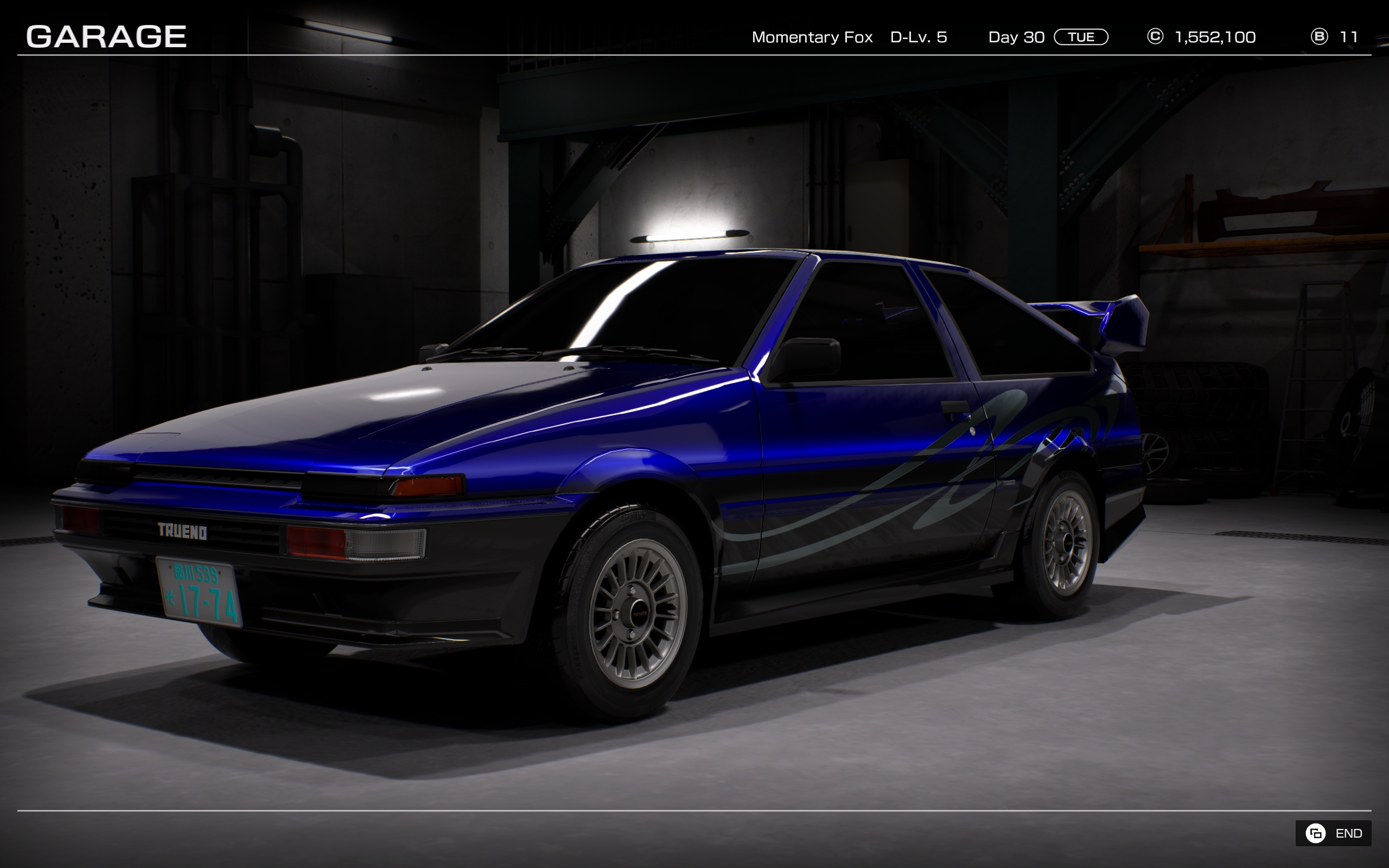
Developer Genki has been perfecting the art of digital street racing since 1994, and thanks to its long experience in this niche Xtreme Racer’s early access form feels polished to a showroom shine and ready to show everyone else how it’s done. As positively as the game’s already been received (an all-time peak of almost 16,000 concurrent players is a phenomenal achievement for the relatively quiet pre-release return of a series that’s been dead since 2006), there’s still much more to look forward to once the game moves to full release in about four months time. We may already have plenty of cars and over 200 rivals to challenge, but Genki claims only about half of the story is currently in the game.
These brief narrative segments, spouting atmospheric wonders like “Spirits sunk into the chaos of darkness by excessive pride,” serve as the framework for numerous progress-gating missions. They give me specific teams and targets to race against and access to new cars and more powerful upgrades when completed. How I tackle them is open-ended: I can make it personal and pick off a particular team one by one, or cruise around the 180km of gorgeous Shuto Expressway and take on anyone and everyone I find, challenges eventually cleared just by happening to bump into enough of the right racers as I go.
Back in my garage I can read through my rivals biographies, taking in page after page of delicious racing lore, each new entry a fantastic mix of local gossip and tactical insight. Flying Octopus likes to use stock parts where possible, gaining their performance boosts primarily from precise tuning. Midnight Blue’s love of classic chiptune beats means their car often sways from side to side as they get lost in the music. Thanks to these dialogues and details every race is a very personal affair—and every loss an unforgivable offence that must be avenged.
Like that time I saw someone in a gaudy neon-underlit box of a car, cockily thought “I’ll show that poseur what a real racer looks like” and then realised with horror that it had been modified on the inside as well as the outside as they instantly pulled away.
I could have gone back to my garage and set off again in something more powerful but… I didn’t want to win in something fresh from the dealer. I wanted to win in my car. The one I’d spent ages adjusting the paint job of and then layered with subtle graduated shading and a customised vinyl wrap.
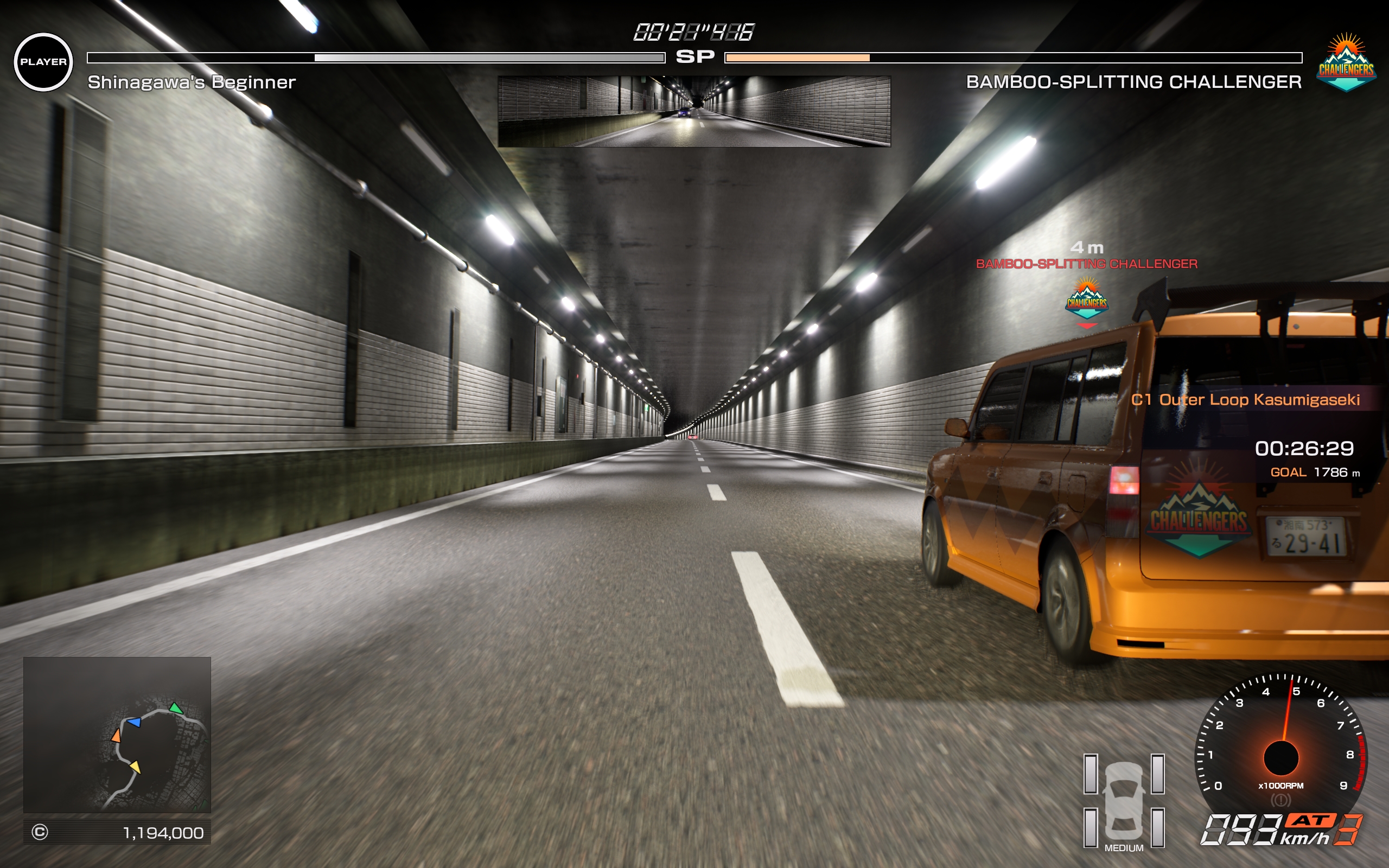
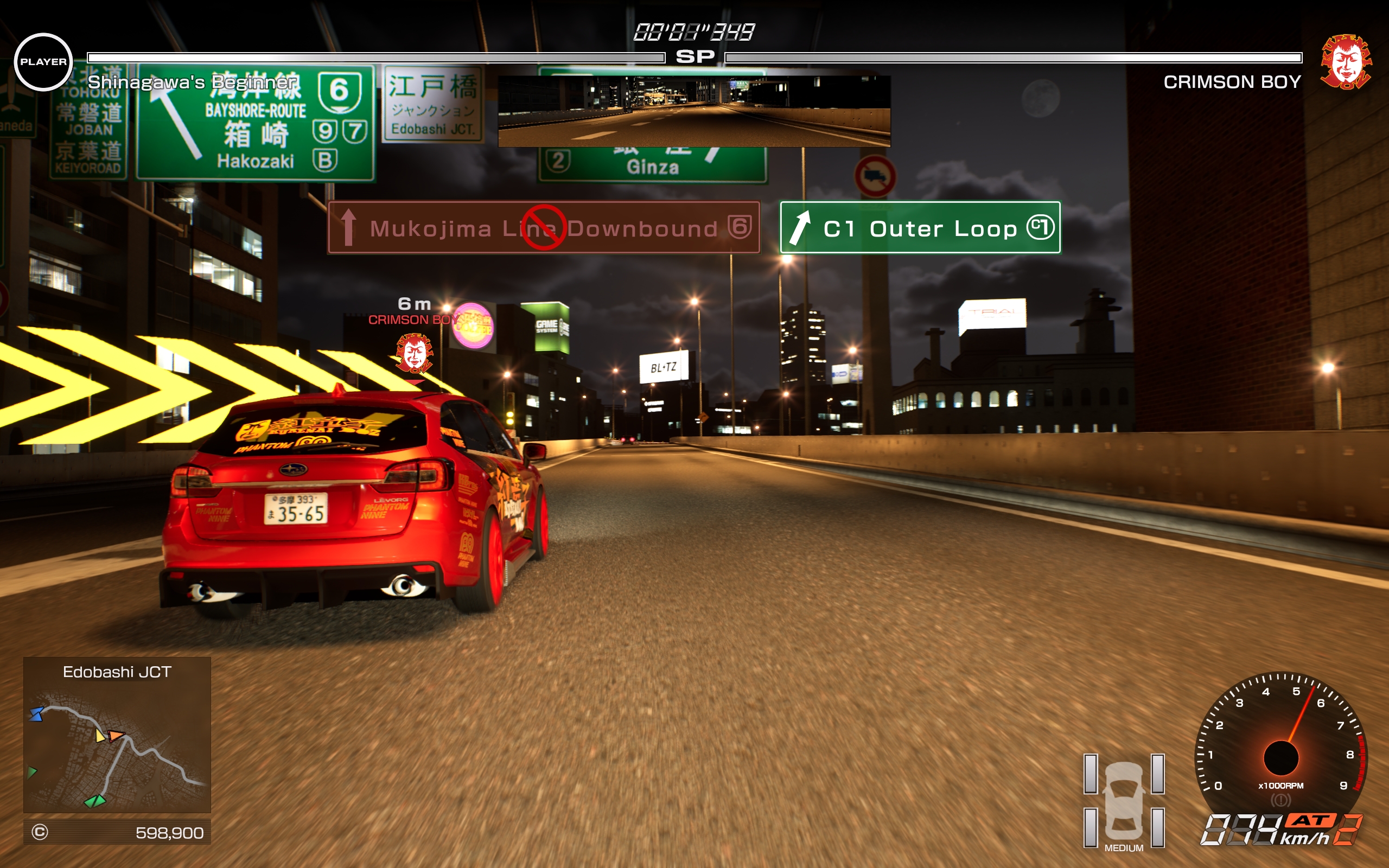
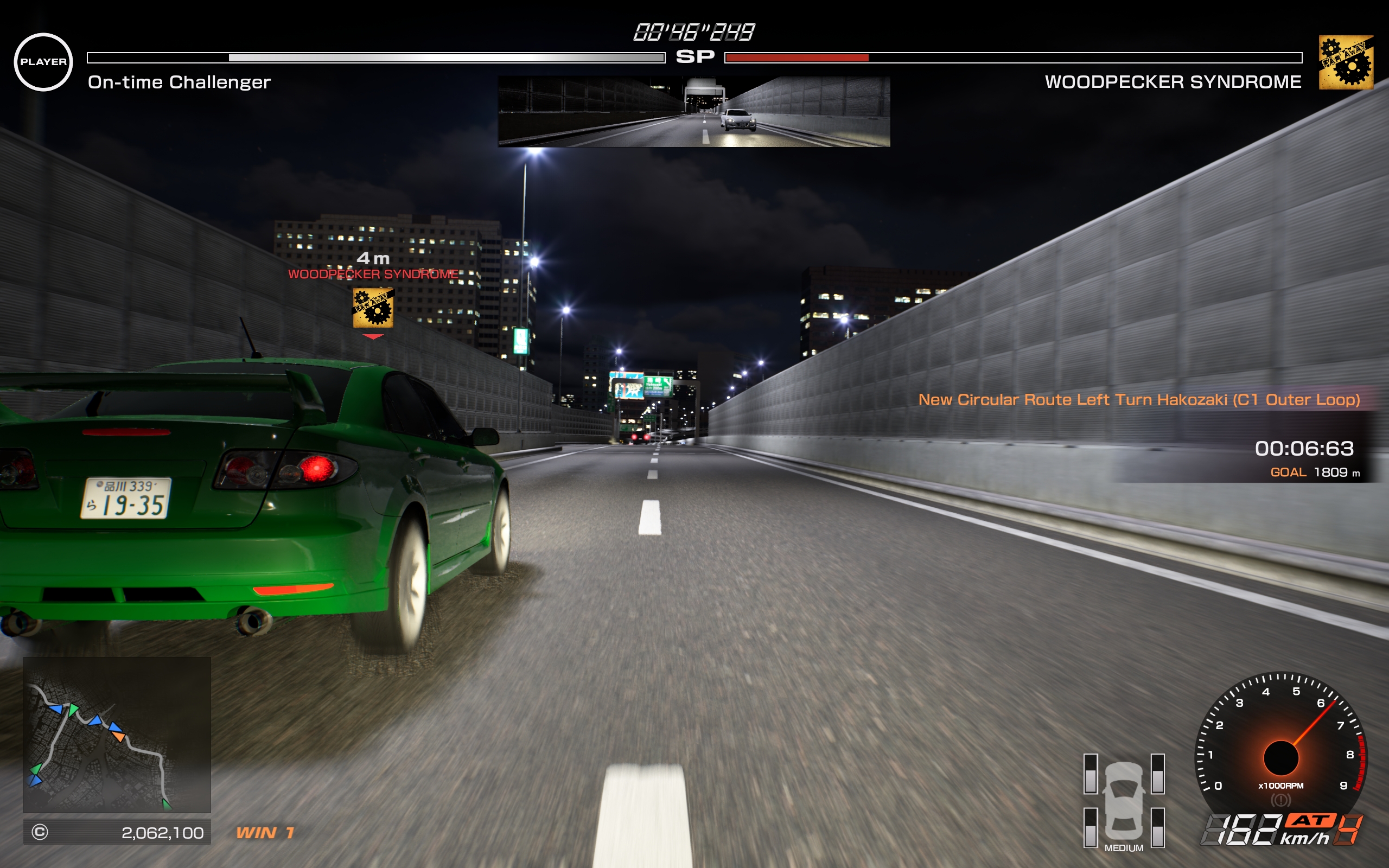
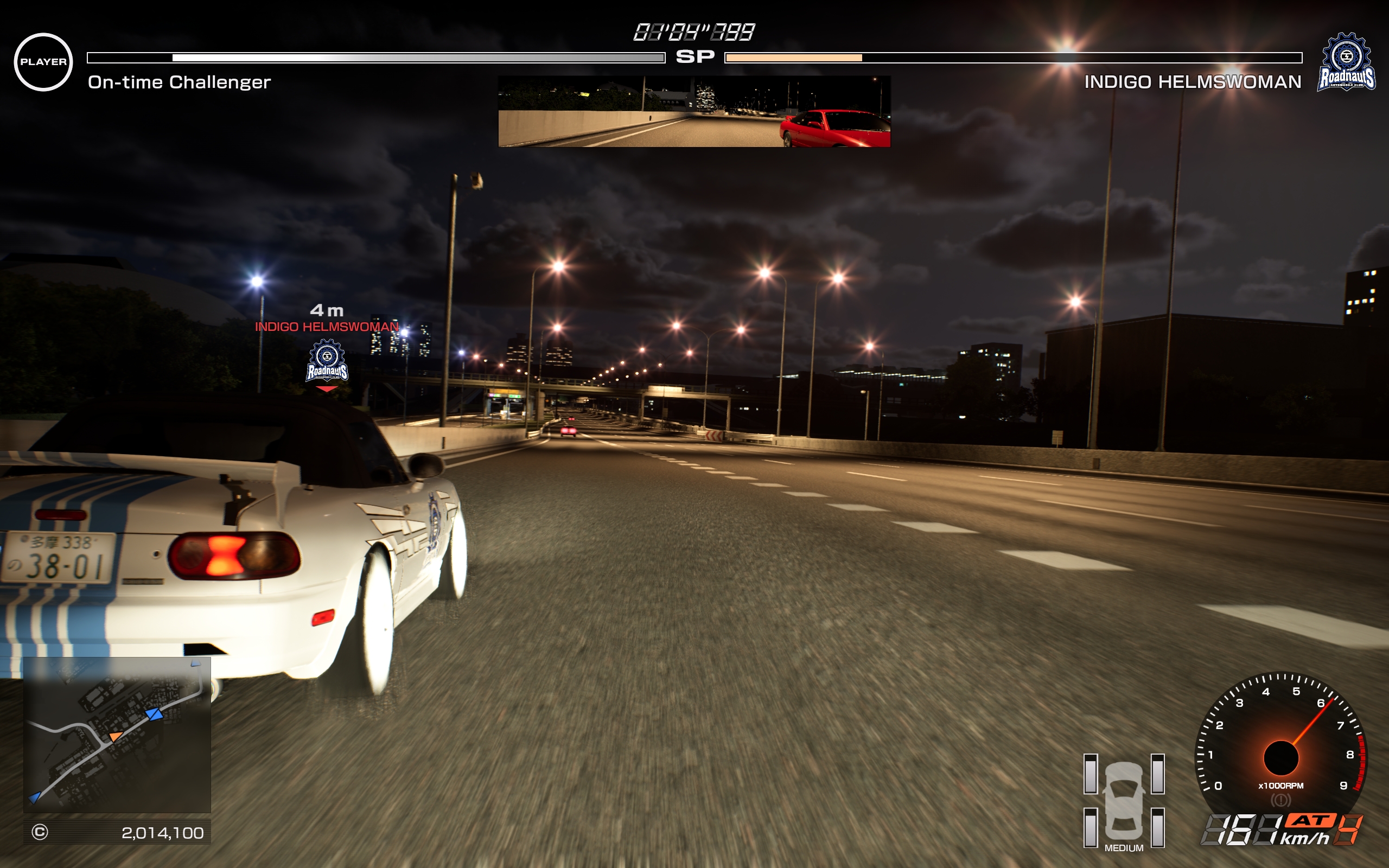
Which is where tuning comes in: If I want to keep things simple I can stick with the various major enhancements unlocked via a skill tree-like system, using points earned by winning races. Green numbers are better, red numbers are worse. Once I’ve got those sorted I can also equip a skill that helps boost my spirit, or maybe one that protects me a little if I’m pushed into a wall. In a few clicks my car’s better than ever and good to go.
But if I want to get really serious about it, the setting menu is a nerdy motorist’s dream. Do I want my front/rear suspension’s damper balance to lean towards rebound or compression? Do I want to alter my brake balance or adjust my gear ratios? And as someone whose car knowledge is roughly at the “Wheels are round” level, should I?
Yes, I should. I can feel the difference a good tinkering makes when I race, and there’s real pride in squeezing every last drop of power out of my plucky underdog and then thoroughly outperforming something I lost to last time.
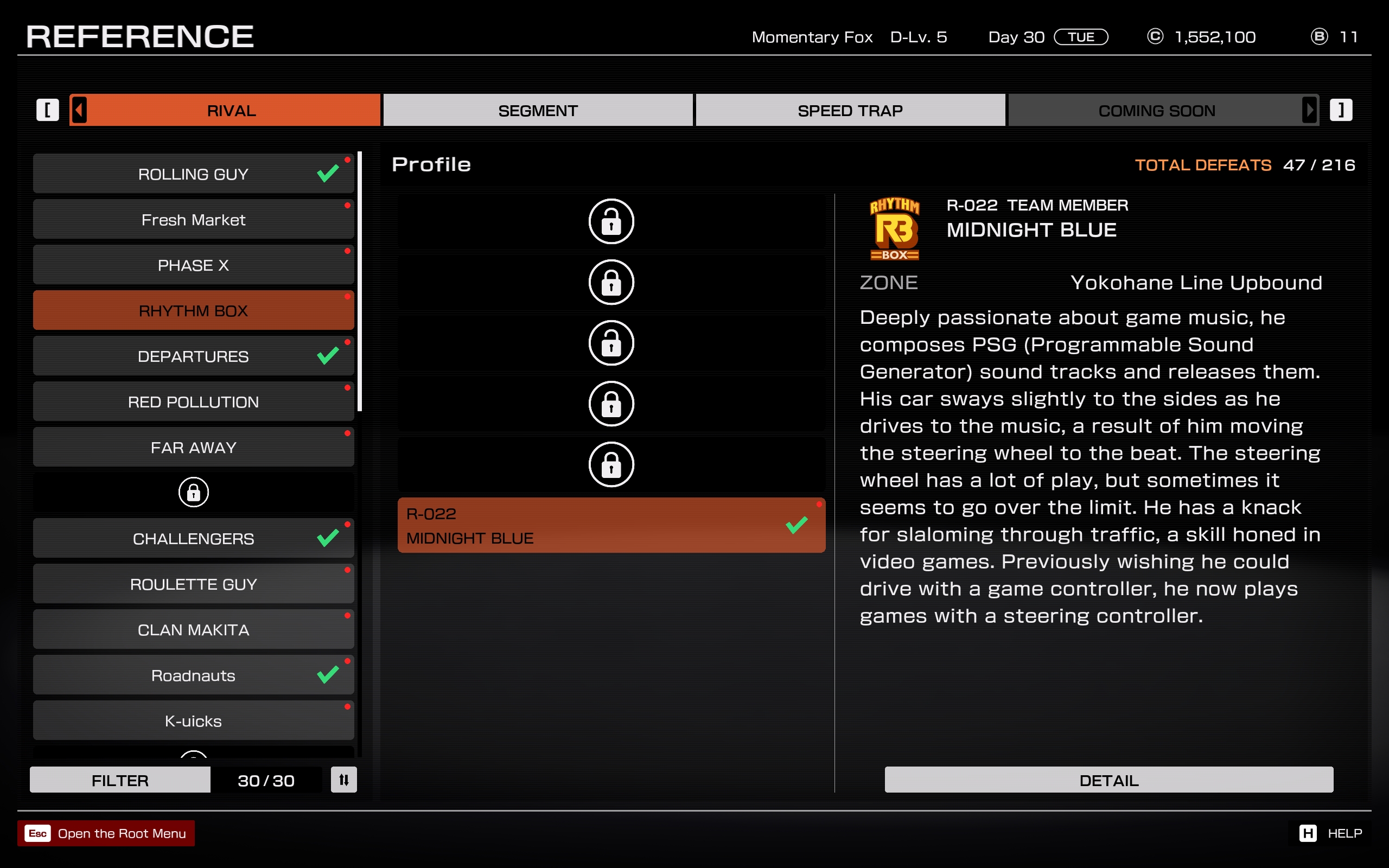
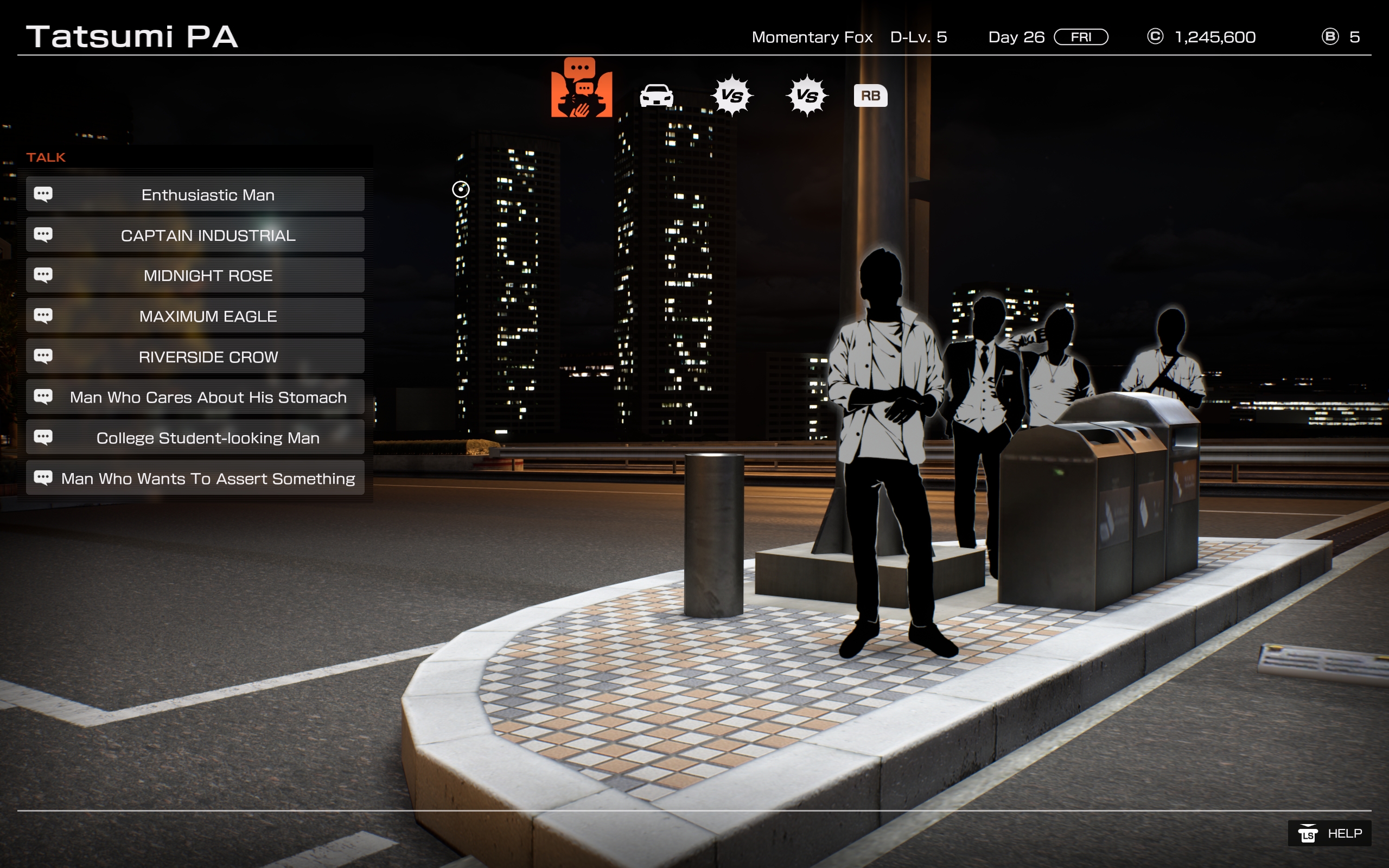
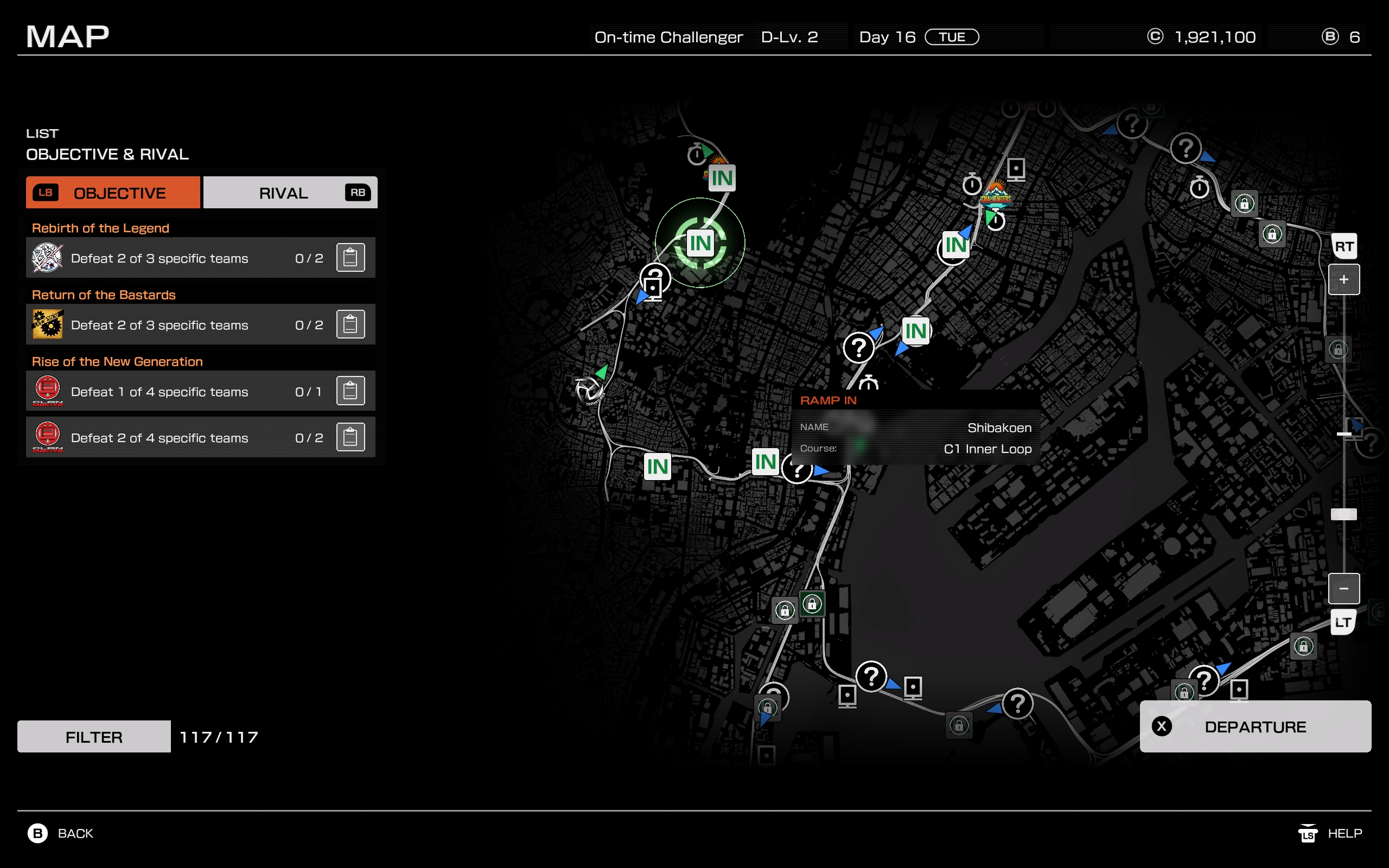
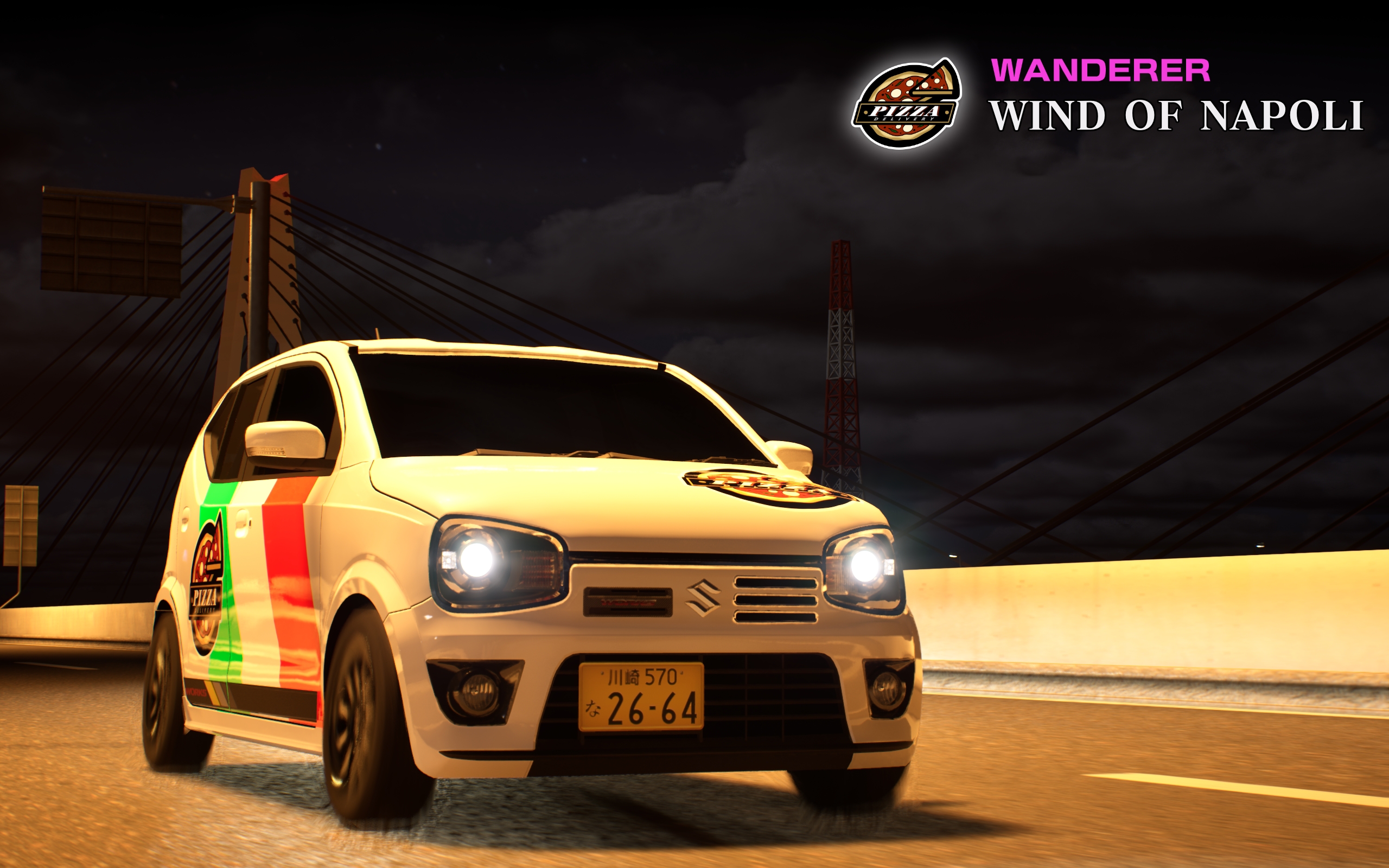
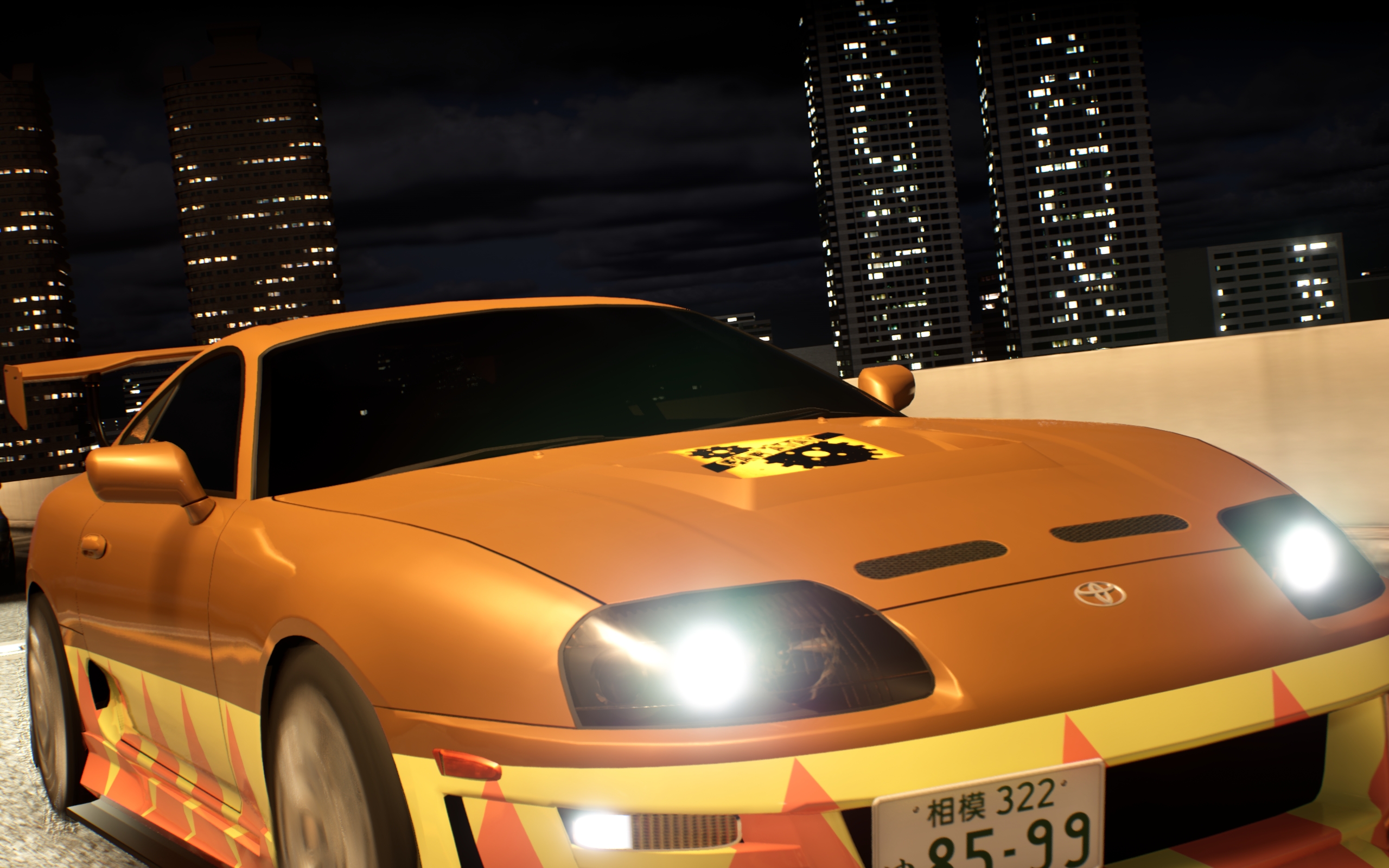
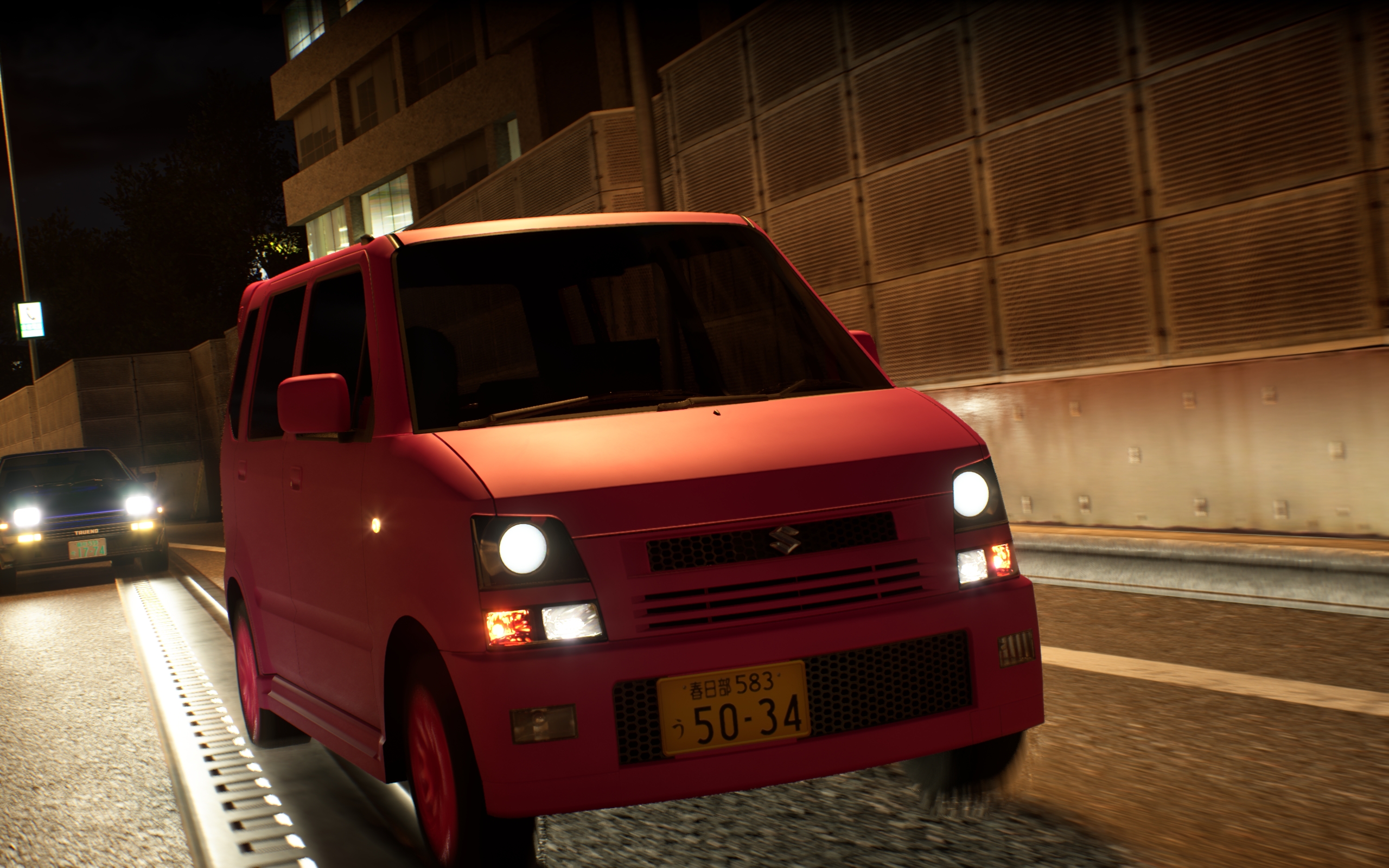
Tokyo Xtreme Racer is packed with reams of stats, a huge length of real-world tarmac to drive around, and lots of shiny licensed cars for enthusiasts to get excited about. Why yes, that is a modified Toyota Mark X 350RDS (GRX133) ’16 zooming off into the night. Do I want to challenge it? Admire it? Create something that could beat it and look amazing while doing so? I can do all of that and more. But it’s just as much of a social street racing experience too, the cool night air packed with rivals to butt heads and bumpers against. I can pull up in any of several car parks and challenge some of the game’s stylishly silhouetted drivers to a race, or chat with local fans, which might reveal where certain legendary racers turn up, or maybe even get a temporary tune job for my car, giving me a competitive edge for the night.
There is no aspect of urban racing that isn’t present and celebrated to its fullest here. The idea that we’ll somehow be getting even more of this already good thing in a few months time almost feels absurd.











